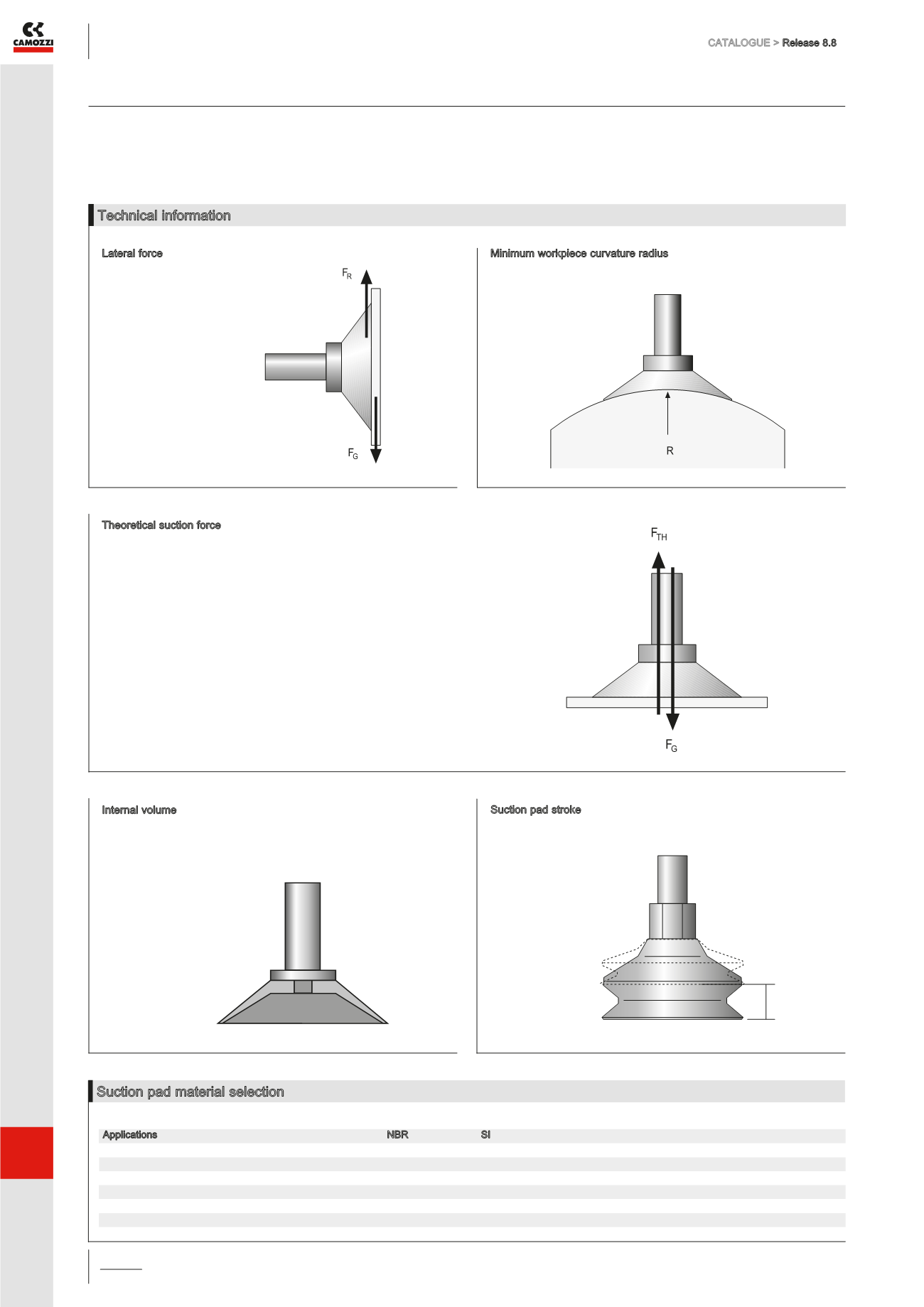

CATALOGUE >
Release 8.8
APPENDIX >
Technical information about products
Applications
NBR
SI
When designing a vacuum circuit and selecting suitable
suction pads it is necessary to follow certain calculations to
select each individual component in a correct way.
Listed below is a summary of the most common data
to take into consideration.
Technical information
Suction pad material selection
Food
•
Oily parts
•
Slight marking of workpieces
•
For high temperatures
•
For low temperatures
•
Very smooth surfaces (glass)
•
Very rough surfaces (wood, stone)
•
•
a
APPENDIX
Theoretical suction force
Theoretical force (N) at a -0,6 bar measured at sea level.
Since this is a theoretical value,
it is necessary to reduce this value by adding a safety factor to
compensate for friction or loss of vacuum, depending
on the application (from rough workpiece surface
or porous material etc.).
Suction pad stroke
This is the lifting effect which occurs during evacuation
of a bellows type suction pad.
Internal volume
This is used to calculate the total volume of the gripper system.
With this value, it is also possible to calculate the evacuation time.
Lateral force
The measured value in N at a vacuum
of -0,6 bar on a dry or oily,
flat and smooth workpiece surface.
These values do not include a safety factor.
Minimum workpiece curvature radius
This specifies the minimum radius at which the workpiece
can be gripped securely by the suction pad.
a
/3.07
Suction
pad stroke
Technical information about suction pads



















